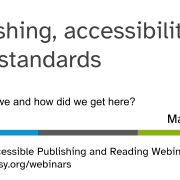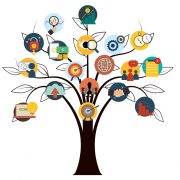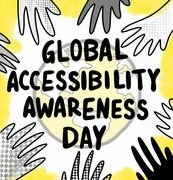Inheritance Tax: The Real Cost of not Making Content Accessible
 At last year’s London Book Fair, I was invited to speak at the Publishers Association Accessibility Action Group’s annual seminar. My aim was to bring the perspective of a large trade publisher to the subject of accessible content production. There, I emphasised both the enormous value in creating books with enhanced accessibility, and also the unique challenges in doing this at-scale when you are responsible for a list of the size that we are. Both our backlist catalogue, and our ongoing frontlist output are at such a scale that we have to make workflow changes very selectively and deliberately.
At last year’s London Book Fair, I was invited to speak at the Publishers Association Accessibility Action Group’s annual seminar. My aim was to bring the perspective of a large trade publisher to the subject of accessible content production. There, I emphasised both the enormous value in creating books with enhanced accessibility, and also the unique challenges in doing this at-scale when you are responsible for a list of the size that we are. Both our backlist catalogue, and our ongoing frontlist output are at such a scale that we have to make workflow changes very selectively and deliberately.
Rather than restating the content of that talk here, I thought it was worth talking more about the practical benefits of creating this content, beyond the indisputable ethical case. There has been plenty of excellent discussion about the moral imperative, so I won’t add to that here, but I think it’s important to spend some time talking about some other key advantages that creating accessible content brings.
I am also not going to address the argument from a surface-level commercial perspective. There have been claims about the potential unaddressed market, but it’s very hard to estimate what that really means in terms of sales and I am not qualified to make that kind of assessment. However a more easily-argued, but no less grounded commercial benefit is to do with preparing content for the reading surfaces of the future.
I write here not as a representative of my employer, but as somebody who has worked in digital publishing in various forms for over a decade, and with great optimism for the changes I see happening in our attitudes toward quality content. What I intend to argue is that the goals of accessible publishing are, in fact, goals that improve publishing and the publications we create as a whole. Rather than talking about accessible books, I like to refer to ‘semantically-enriched’ content, because this emphasises that the very same work that creates more accessible books also makes them a richer, more valuable store of preserved culture and knowledge, more ready to be transformed into the formats of the future.
When we create accessible ebooks, nothing we are doing is specific to print-impairment. Above all, what all of the tasks involved (tagging, metadata enrichment, logical structuring, described content et al) have in common is that they are adding semantic depth and direction to a work. By creating semantically-enriched content – which is to say, in essence, content that is fully realised, described and presented – we create content of fundamentally greater value, from which any reading system of the future, of any kind, will benefit. Particularly as we develop multivarious forms of artificial intelligence and ponder the uses to which it might be put, it is more important than ever that digital content describes itself, providing cues to its intended shape beyond the surface level of the written word. When we create semantically-enriched content, we are creating digital files that are ready and able to be turned into literally any format or surface we might think of in the future, beyond just ebooks as we currently know them.
On a raw technical level, semantically-enriched content involves creating better markup, with more semantic hooks that reading systems of any kind are able to use to trigger functionality and alter presentation. File formats will change over time, but as long as that semantic data is present, content can be reliably transformed into any format. Failing to add these features now is really just delaying the cost to a later date, as publishers who are now having to rework their backlist from the ‘dark days’ of early ebook conversion are already experiencing.
All of this was emphasised again for me recently by the PA’s fantastic ‘Axe the Reading Tax’ campaign. Ebooks are a crucial method of cultural storage and preservation, and far from being print’s poor cousin, in fact bring substantial benefits that I believe make them an even more important medium of cultural preservation. By making all of our books digitally and semantically rich, we bequeath a more valuable inheritance to future generations and the technologies they will create.
I am going to end this high-minded ramble by returning to the very thing I set out to not talk about: The oft-discussed ethical imperative. By creating semantically-enriched content, we open avenues that help make the human inheritance of literature – from its soaring highs of cultural value and moral power to its soul-enriching entertainment and precious distraction – available to the broadest number of people, and for the longest period of time possible; and by doing this fulfil our cultural mission as publishers to elevate, propagate and enrich the culture in which we operate. As it happens, in this instance, it also makes good commercial sense from anything other than a direly short-termist perspective.
It is incumbent upon each generation to pass on the great cultural inheritance of the written word. Our generation has a unique opportunity to do so in a profound and meaningful way that simply did not exist for those who came before us. It’s not often that those of us on the ‘nuts and bolts’ side of the industry get the opportunity to engage directly with such profound and meaningful goals, but here is one. Make it count.
This article was kindly submitted by Simon Mellins, Ebook Technology Coordinator at Penguin Random House UK. Simon’s slide deck from his presentation at the London Book Fair 2019 is available here.






